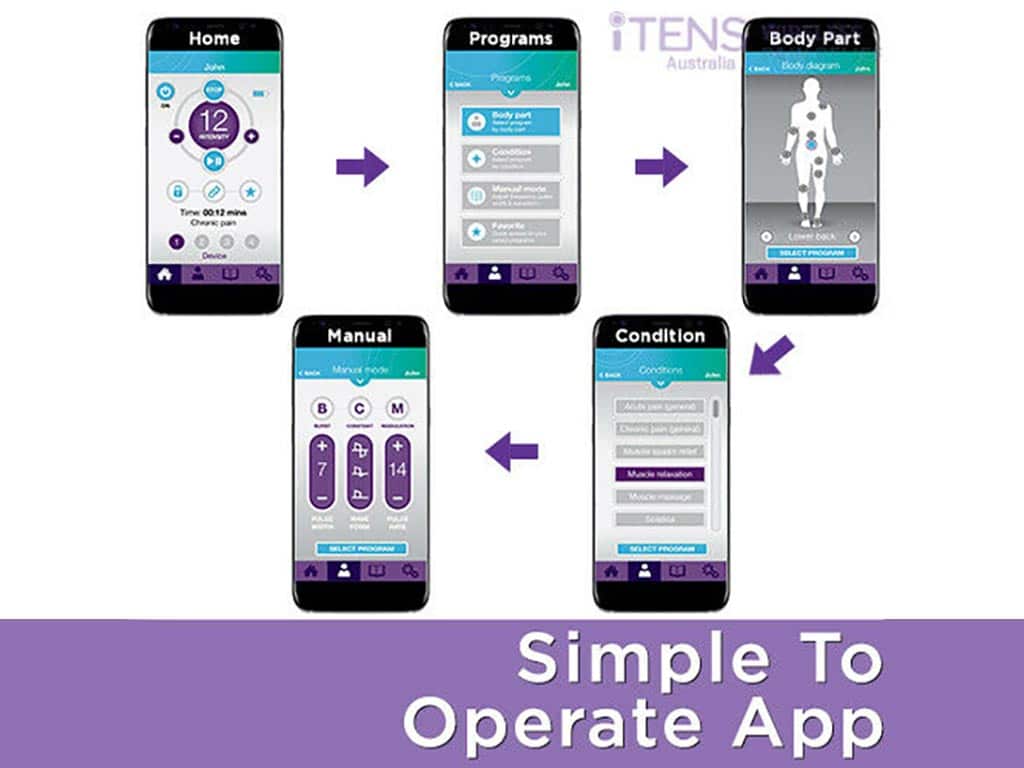
A Transcutaneous Electrical Nerve Stimulation or TENS machine for back pain is a device for pain relief. It is a machine that works in various ways to improve the quality of life. Foremost, the electrical device dispatches mild electrical currents through the skin to the nerves. Accordingly, this electrical stimulation can block pain signals, trigger endorphin production, and enhance blood flow. To use it, the operator must apply TENS pads on the pain source and adjust the settings accordingly.
Living with backache can be a daily struggle. It can be debilitating and impact the overall quality of life. Traditional pain management solutions may include physical therapy treatment, pain medication, and exercises. However, they may not always provide adequate relief or have adverse effects. Fortunately, TENS pain relief therapy provides effective analgesia for backaches. This article will present the TENS unit for backaches, how it works, and how to operate it.
What Is a TENS Machine for Back Pain?
Back pain is a common type of pain that affects millions of people. It can range from mild discomfort to severe pain. It can stem from various causes, including muscle spasms, disc pain, and posture problems. Accordingly, this widespread ailment disrupts daily activities and decreases the overall quality of life. Fortunately, TENS therapy is an innovative and effective solution for managing backaches.
A TENS machine for back pain is a small, battery-operated device that sends electrical impulses to the body. It streams the electrical pulses through adhesive electrodes placed on the skin. Pain clinics and medical professionals often incorporate TENS therapy into treatment plans for patients. Also, individuals can use TENS units for self-administered pain relief in the comfort of their homes.
The TENS devices come in both wired and wireless varieties. Wired TENS machines are connected to the electrode pads via lead cables. Conversely, wireless models offer more flexibility and convenience. It allows users to move freely without the hassle of tangled wires. Despite the differences in design, both types are effective in managing backaches.
Causes of Backaches
- Muscle strain: It can occur from improper posture when lifting heavy objects, sudden movements, or overuse.
- Herniated discs: The disc in the spine can sometimes herniate or bulge, pressing on the nerves.
- Poor posture: Chronic poor posture can lead to backaches by putting pressure on the back muscles and spinal discs.
- Arthritis: Arthritis in the spine can cause stiffness and backaches.
- Sciatica: It is a medical condition where discomfort radiates along the sciatic nerve. It runs from the lower back down to the legs.
- Spinal stenosis: It involves the narrowing of the spinal canal. Hence, it can pressure the spinal cord and nerves, causing discomfort.

How a TENS Machine for Back Pain Works
The TENS machine for back pain works through simple mechanisms, providing analgesic effects. Firstly, the TENS unit stimulates the release of endorphins. Endorphins are the natural painkillers produced by the body, akin to opiates. These biochemicals bind to opioid receptors in the brain and spinal cord. Thus, it helps to alleviate backaches and induce feelings of well-being.
Secondly, TENS employs the pain gate mechanism to mitigate discomfort. It suggests that the nervous system can only process limited sensory information. The electrical impulses can occupy the nerve pathways, effectively “closing the gate” to painful sensations. Nevertheless, the electric stimulation can prevent the pain signals from reaching the brain. It reduces the perception of pain intensity.
In addition, the application of TENS therapy enhances blood flow. The electrical pulses encourage vasodilation, the widening of blood vessels. Accordingly, this increase in blood vessel diameter allows for a greater volume of blood flow. Hence, it delivers more oxygen and nutrients and removes waste products and inflammatory substances. It aids in the healing process and provides back pain relief.
Benefits of Using TENS
One of the primary benefits of TENS is its non-invasive and drug-free nature. There is no need for incisions, injections, surgical procedures, or intake of medications. It eliminates the potential for dependency or prolonged recovery times. Additionally, the device is highly customisable. Users can adjust the pulse frequency, pulse intensity, and pulse duration. The electrodes can also be placed in specific areas.
TENS therapy is versatile. Aside from backaches, it can treat other acute pain and chronic pain conditions. It may include knee pain, labour pain, post-operative pain, osteoarthritis pain, and diabetic neuropathy. Lastly, TENS treatment is cost-effective. The one-time purchase can offer long-term relief.

How to Operate a TENS Machine for Back Pain
Operating a TENS machine for back pain involves a straightforward process. Initially, prepare the skin where the electrodes will be placed. Next, attach the electrode pad to the skin. It is crucial to adhere to the proper electrode placement in this step. Once the pads are in place, connect the electrodes to the central unit using wires or to a smartphone via Bluetooth for wireless. Turn on the device when ready.
Then, adjust the settings of the TENS unit. Individuals can modify the pulse rate, intensity levels, and pulse duration. Additionally, some advanced models have pre-set programs. This allows users to choose a program for treating backaches. It is ideal to start the key parameters in the lowest settings. Increase the settings gradually until a strong but comfortable sensation is felt. Do not set the settings too high.
During the treatment session, monitor any sensations that may occur. A tingling or buzzing sensation is normal. The duration of the therapy can last for 15 to 30 minutes. Take breaks for longer sessions. After completing the TENS therapy, turn off the device and carefully remove the electrodes from the skin.
Electrode Placement Guide
Firstly, identify the exact area of the back experiencing discomfort. Then, clean and dry the skin over it to remove oils or lotions that could prevent electrodes from sticking correctly. Next, peel off the protective backing of the electrodes and place the pads on the skin. Typically, the electrodes are placed on either side of the spine for backaches. Individuals can also position the pads surrounding the area of discomfort.
It is crucial that the electrodes are spaced at least one inch apart. Also, do not place the adhesive electrodes directly on the spine. Furthermore, avoid placing the pads on broken skin.
Conclusion
There are many causes of backaches, including muscle strain, herniated discs, poor posture, and spinal stenosis. Fortunately, the TENS machine for back pain is an effective treatment solution. It is a wired or wireless device that sends electrical currents to the body. Accordingly, this electrical stimulation works through various mechanisms to improve quality of life. It interrupts the transmission of pain signals to the brain, prompts the production and release of endorphins, and improves blood circulation.
Furthermore, TENS therapy is non-invasive, drug-free, customisable, cost-effective, and versatile. Operating the device is easy. Begin by locating the treatment area in the back and preparing the skin. Next, place the electrode pads. Finally, turn on the unit and adjust the settings. Proper electrode placement is crucial. For backaches, users can place the pads on either side of the spine or surrounding the area of discomfort. Those interested in a wireless TENS device may consider the iTENS from iTENS Australia.




















